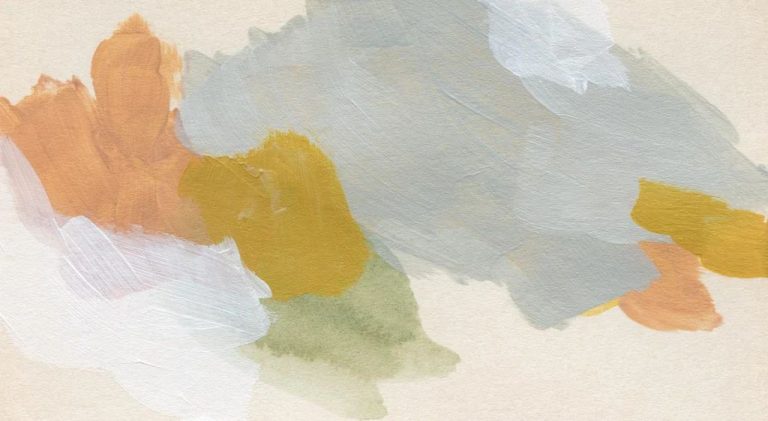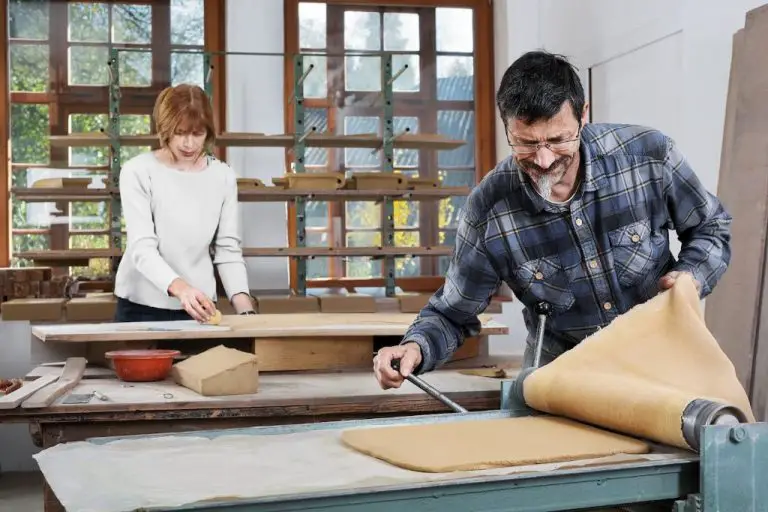What To Do If Clay Is Too Hard?
Why Clay Can Be Too Hard
Clay can become too hard to work with for a variety of reasons. The most common causes are improper storage, the composition and ingredients in the clay, and overworking the clay.
If clay is left uncovered or exposed to air for too long, it will dry out and become very hard. Storing clay in an airtight container helps prevent moisture loss. Clay that is too hard from drying out may need to be rehydrated by mixing in water.
Some clays, especially natural clays directly from the earth, have a high mineral content or include sand or grit that gives them a stiff, tough consistency. The types of clay used, such as porcelain or stoneware, can also impact the hardness. These clays are harder in their unworked state.
Finally, overworking or wedging clay can make it become too hard. The friction from extensive kneading causes clay particles to build up making the clay less pliable. When clay is overworked, it may need to rest and reconstitute.
Test The Hardness
One easy way to test the hardness of your clay is to try making an indent in it with your fingernail. Take a small piece of the clay and attempt to push your fingernail into it. If you can easily make an indent that stays, the clay is soft enough. However, if the clay is too firm to make a mark or the indent disappears, that indicates it’s become too hard.
You can also judge hardness by trying to roll the clay into a ball or coil. Soft clay is easy to manipulate, while clay that’s too hard will crack or crumble when attempting to reshape it. Press a piece of clay flat between your fingers – if it doesn’t flatten out smoothly, that’s another sign the clay has become too stiff.
Finally, check the condition of any dried clay you may have. If properly dried clay is brittle or cracks and crumbles when you try to wet it, the clay body is likely quite hard when wet as well.
Re-wedge The Clay
One of the easiest ways to soften hard clay is to re-wedge it. Re-wedging involves kneading the clay to work it until it becomes more pliable. Start by cutting or breaking the hardened clay into chunks about 1-2 inches in size. Take each chunk and press and squeeze it firmly in your palms, rolling it back and forth to warm it up. You can also bang it against the table or counter to help break the clay apart further. The kneading motion will generate heat through friction which softens the clay. Knead each piece for 2-3 minutes before combining them and kneading the full amount together. Continue kneading and folding the clay over on itself, pressing into it with the heels of your hands. After 5-10 minutes of vigorous kneading, the clay should have softened significantly. The constant pressure breaks down the rigid clay structure, allowing more space between the particles so they can move past each other and make the clay malleable again.
Add Water
One of the easiest ways to soften clay that has become too hard is by slowly adding small amounts of water. Start by spraying or mixing just a teaspoon or two of water at a time into the clay. Knead the water into the clay, continuing to add teaspoons of water bit by bit until the clay softens to your desired consistency.
Be careful not to add too much water at once, as this can make the clay sticky or cause air bubbles. Adding water gradually gives you more control over the consistency. Always knead thoroughly between water additions to evenly distribute the moisture throughout the clay. Keep a cloth on hand to wipe excess water off your fingers or tools if the clay surface becomes too wet.
Filtered, distilled, or purified water will help prevent mineral deposits and residue. Do not use tap water unless you know it has a neutral pH, as this can alter the clay’s chemistry. Once you’ve added sufficient water, the clay should be smooth, flexible, and have a slight tackiness. Test a small piece to ensure it is soft enough for your planned sculptures or projects before committing your whole clay supply.
Use Clay Softener
One way to soften clay that has become too hard is by working in a clay softener. Clay softeners are additives that can help make the clay more malleable and easier to manipulate when it has dried out and become stiff and uncooperative.
Some common household items that can be used as clay softeners include olive oil, mineral oil, and glycerin. When added sparingly and worked thoroughly into the clay, these additives act as plasticizers to help make the clay molecules slide past each other more easily. This allows the clay to become more flexible and responsive.
Olive oil in particular is a popular choice for softening polymer clay. Adding a couple drops of olive oil and kneading it into stiff clay can bring it back to a smooth, workable texture. The key is to add only a small amount at a time and incorporate it fully for the best results.
Clay softeners like oils and glycerin allow clay to be conditioned and revitalized when it has dried out. Work them in thoroughly and give time for them to take effect before assessing if more is needed. With a little care and effort, stiff clay can become soft again.
Avoid Overworking
Be cautious against over-wedging or kneading the clay when it becomes hard, as doing so can actually dry out and harden the clay further. The friction and heat generated from excessive manipulation causes the clay to lose moisture. If the clay feels tough, stop kneading and avoid the temptation to wedge it vigorously. Let the clay rest before attempting to soften it through the proper methods.
Store Properly
Storing your clay properly is one of the best ways to prevent it from drying out and hardening.
Here are some tips for storing clay:
- Wrap unused clay tightly in plastic wrap or put it in a sealed plastic bag. This prevents air from reaching the clay and drying it out.
- Store clay in an airtight container like a plastic storage bin or Tupperware. Make sure the lid seals tightly.
- Keep clay cool and away from direct sunlight and heat sources. Store in a basement or interior closet if possible.
- Consider storing clay in the refrigerator, but not the freezer. The cold helps retain moisture.
- Always clean clay tools before storing to avoid drying out any clay residue.
- Knead a bit of vegetable oil into the clay before wrapping for very long term storage. The oil helps prevent hardening.
- Store clay flat or loosely rolled. Avoid tightly rolling or twisting clay for storage.
Following proper storage methods will help unused clay stay soft and workable for future projects.
Consider Rehydration
If your clay has become extremely dried out and hard, rehydrating it in water can help restore moisture and softness. The key is to fully submerge the clay in room temperature water for an extended period of time. Start by breaking the clay into small pieces to maximize surface area exposure to the water. Place the clay pieces in a large plastic bucket or tub filled with water, ensuring all of the clay is fully immersed. Let it soak for 1-3 days, changing the water daily to keep it fresh. The clay will slowly absorb water and become softer. After a few days, knead a small piece to test the consistency. If still too firm, continue soaking and testing daily until the desired softness is reached. With severe drying, rehydration could take 3-5 days. But with patience, even very hardened clay can be restored by this method.
Try a Different Clay
If your current clay continues to give you issues with hardness even after trying various methods of softening, it may be time to switch to a different clay type altogether. Some clays are naturally quite hard in their dried form, making them difficult to wedge and work with. Trying a clay with a different composition that is known for being more pliable can help.
Polymer clays for example tend to be quite soft and flexible compared to natural clays. Oil-based clays also tend to be more malleable. Alternatively, you could try a natural clay that is harvested from a different source and location, as the mineral content in clay can vary. A stoneware or earthenware clay may be more workable than a porcelain clay.
Test out small amounts of different clays to find one that has the right level of softness and plasticity for your needs. Having a variety on hand gives you options to switch between clays for different projects and needs.
When to Give Up
If you’ve tried the techniques above and your clay is still too firm and unworkable, it may be time to discard it. Here are some signs your clay is too far gone:
- The clay has completely dried out into a brick or powder.
- Adding water causes the clay to become a muddy, soupy mess.
- The clay has strange colors or smells, indicating contamination.
- The clay crumbles apart when you try to wedge or shape it.
- Kneading produces no change in the clay’s hardness.
- Storing rehydrated clay for weeks produces no softening.
At this point, there is likely too much irreversible damage to the clay’s structure. Continuing to struggle with clay that is past its limits will only lead to frustration. As disappointing as it is, the best option is to discard the clay and start fresh with a new block.



